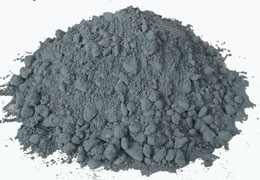1. Requirements
include inspection and treatment of furnace yoke, hydraulic system, water cooling system, induction coil and its insulating paint, coil slurry, and empty furnace test.
(1) Observe with the naked eye whether the fastening screws of the yoke of the furnace body are loose. If there is any looseness, reinforcement must be carried out. At the same time, the splashing and adsorbed iron beans on the yoke should be removed.
(2) Turn on the hydraulic switch and turn over the furnace body. If the furnace body cannot be turned normally, it should be repaired in time.
(3) Open the pump body of the water-cooling system and check whether there is water seepage or water leakage in the connecting pipes. If so, tighten or replace the water-cooling pipe for immediate treatment to ensure the normal operation of the water-cooling system.

(4) Check whether the furnace body coil insulation paint, the coil paste between the upper building body and the coil are intact. If there is any damage, special insulation paint and coil paste should be used for brushing and filling. There must be no excess metal on the energized coil Attachments. Use coil slurry to fill, and it must be dried naturally for 24 to 48 hours, or dried for 12 hours and then put into a crucible mold with a low power of about 10 kW and baked for 1 to 2 hours to remove the water in it to prevent short circuits between turns.
(5) Check whether the gap between the upper building body, the upper building body and the coil are excessively flat. If it is too large, plastic material can be used to fill and smooth.
(6) Empty furnace test: After the empty furnace is powered on, the full power is maintained for 2 minutes. At this time, the electric furnace current value is small, the furnace pressure value, carefully check the electric furnace pressure value, and the subsequent knotting operation can be performed after the furnace pressure value is normal.
2. Purpose
Through the above steps, it is possible to minimize the loosening of the furnace body yoke fastening screws, grounding wires, etc., the insulation of the furnace body (turn-to-turn short circuit and induction coil adsorption iron beans), leakage, and filling of the moisture contained in the coil compound. The failure to smoothly transition between the upper structure and the coil in the body affects the natural shrinkage of the lining, causing cracks and other accidents. It is necessary or difficult to judge the shutdown and dismantling of the furnace to ensure the normal use of the lining and improve the service life of the lining.
